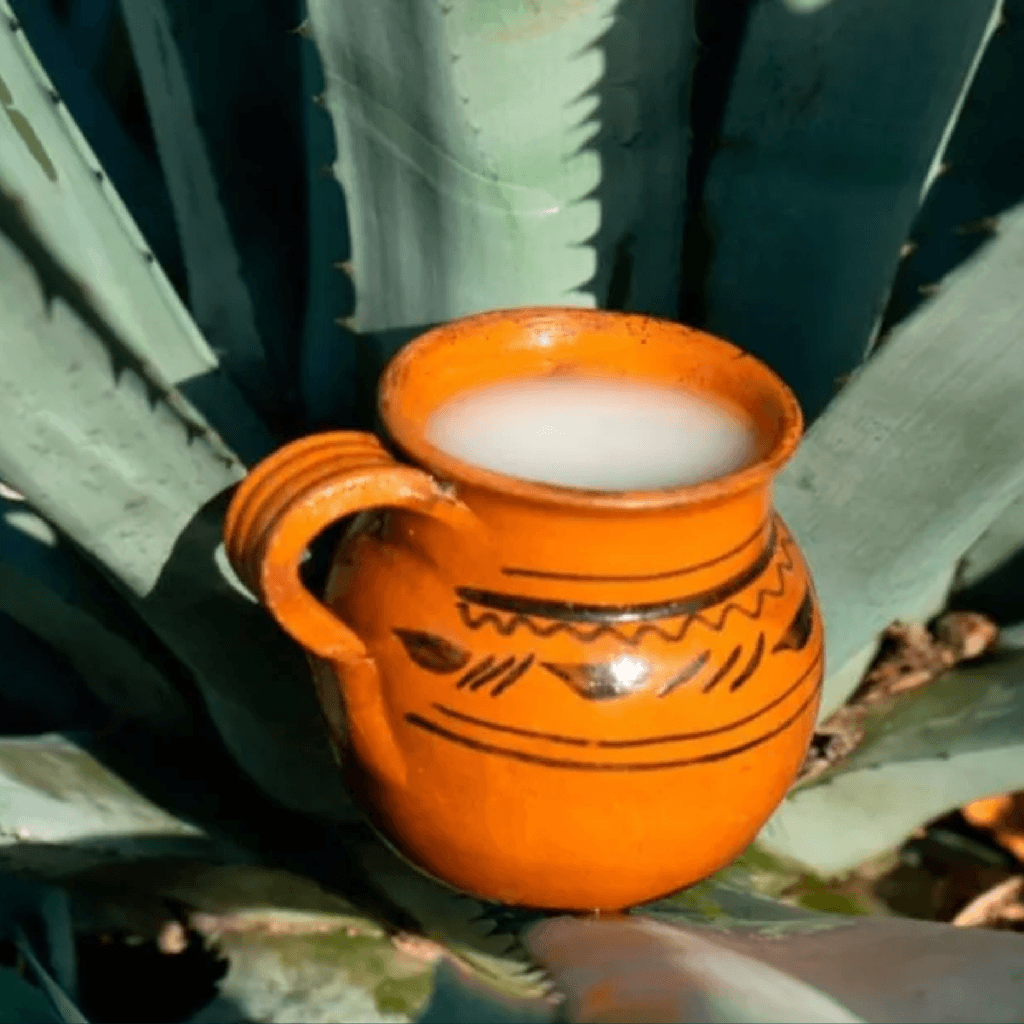Since prehispanic times, pulque has been a very important drink in the culture and beliefs of mesoamerican and indigenous peoples. There’s evidence that pulque has been consumed since 900 AD and is still incredibly popular in some regions of Mexico. In addition, this magical alcoholic beverage has great nutritional properties, as it contains vitamins, minerals and amino acids.
Pulque is an incredibly special drink that deserves to be appreciated for its great nutritional and, above all, cultural value, cause it has been present since the beginning of our times. Also known as the nectar of the gods, it is one of the most representative gastronomic icons of Mexican culture and has a great tradition since prehispanic times.

From the Nahuatl “poliuhqui” or “puliuhqui”, its name means “to corrupt”. For many indigenous people of prehispanic times, it was considered a sacred drink that was part of their religion and cured illnesses. It was around the year 900 when its production was perfected; it was a sacred drink reserved only for the upper classes of the ancient Aztec society. In the Nahuatl culture it had a ritual character, so only priests were allowed to consume it. It was considered only worthy of the gods or for those high members of the political and religious apparatus.
Indigenous cultures had a mystical explanation for the existence of pulque. Among many of their gods was the goddess of the maguey, Mayahuel, to whom they dedicated rituals and celebrations in her honor with this drink. Legend has it that this goddess, as a gift, taught a young girl how to make pulque, and that is how pulque was created. Apart from honoring her with the traditional white pulque, called Iztac Octli, they had other kinds and variations, such as the blue Matlactli pulque.
The Aztecs had several rules when it came to consuming this magical drink: only people over 52 years old could consume it, except for those who were going to be sacrificed in the temple of Huitzilopochtli. Since that time, it was known for its incredible nutritional value and was considered a medicinal remedy against various ailments.
In Mexica mythology it was believed that the maguey was a gift from the gods and its juice (pulque) contained the spirit of Tlaloc, the god of rain and fertility. Being a drink of the gods, the one who consumed it would be granted the wisdom and power of the gods. For this reason, for the Mexica this drink was associated with fertility and its consumption was encouraged in pregnant women to increase the production of breast milk.
Even the spaniards themselves in colonial times fell in love with this drink. Through the works written by the Marquesa Calderón de la Barca, a young englishwoman married to a spaniard from the colony, it is known that she tasted pulque and fell completely in love with this drink. Years later, at the time of her departure, it was terribly difficult for her to conceive the idea of living without the sweet taste of pulque.
Surprisingly, years later it was considered an anti-revolutionary drink, since its fermentation process was criticized, which in some regions included the use of cow or human feces. During the Porfiriato period, pulque experienced a golden age and was the most widely consumed beverage.
This traditional beverage fell victim to the prohibition era during the 1920s, after the Mexican Revolution, which resulted in the closing of several pulquerias in the 1970s. After the catastrophic earthquake of 1985, pulque began to be replaced by beer, which brings us to the state of this ancestral beverage today.
Today, pulque production is threatened by industrialized beverages and the dangerous decrease of bees, which results in the lack of pollination of maguey plants. Even so, because it is considered a great cultural treasure of the country, its production is promoted, which exceeds 303,000 tons per year, according to Mexican government data. The main producer of pulque is the state of Hidalgo, followed by Tlaxcala and Puebla.
How is pulque made?
Pulque is usually a complex, frothy, white and milky drink with a slightly acidic and sweet flavor. It has an alcohol content that can vary from 4 to 6%. Apart from its enormous cultural value, pulque is an incredibly rich beverage in nutrients, amino acids, vitamins, minerals and carbohydrates.
Nutrients such as calcium, iron, phosphorus and zinc are found in this prehispanic beverage, due to the fact that it is a beverage made through fermentation, which is a natural process that is achieved thanks to a microbial community found in the environment of the agave plant. This magical drink is produced from the agave plant, also known as maguey stalks.
The fermentation process to elaborate pulque is carried out in “tinacales” (barrels). An organic substance called “mucilage”, better known as “aguamiel”, is obtained from the maguey stalks. The aguamiel is placed in the tinacales and mixed with the pulque seed. The pulque seed is pulque previously fermented for about 60 days. From this point on, the fermentation and transformation process begins. In 24 hours the magical pulque will be obtained.
For some years now, pulque has had a positive resurgence either from the famous pulquerias, its sale in several bars, as well as the birth of sites such as the Pulque Museum, where its cultural, gastronomic and medicinal value is exposed. If you are a tourist visiting Mexico, you should not leave without tasting this delicious drink full of tradition, culture and history.
At Virtual Homes we know and understand the importance of finding new experiences and adventures, that’s why we want to give you a lodging where you can live like a local, but feeling at home. Our priority is that you don’t miss out on getting to know deeply all that Mexico has to offer.







